Readily distinguished from similar looking species by the coppery ventral side with coarse white hairs.
This species emerges early in spring and is usually found on the flowers of native Bush-peas and their relatives. To a much lesser extent it may also be found visiting non-leguminous flowers that are white and nectar-rich.
| Legend | records | count of breeding adults, pupae and larvae |
| sites | count of major sites (unique 10 km grid cells +/- some distinct approximate localities) |
| adult | live = extracted alive; dead = extracted dead as intact or fragmentary remains; ex billet = reared and emerged from stored sections of host; ex pupa = reared from sampled pupa |
| pupa | extracted pupa; pupa ex larva = reared pupa from larva |
| larva | extracted larva (any stage including prepupa) |
| gall (only) | hatched or unhatched gall identified by form and position rather than contents |
| Plant names in green are hyperlinked to a matching host species page with plant photos. |
Adult M. propinqua appear to be attracted by the brownish yellows and oranges of native pea flowers. This is evident from the fact that they are sometimes found on the similarly coloured flowers of the Wallflower Orchid Diuris orientis (see last two images in Adult images section above). Diuris is well recognised as a floral mimic of the Bush-peas (Beardsell et al. 1986, Indsto et al. 2005).
Based on collections made by me and/or A.M.P.Stolarski, Melobasis propinqua verna has so far been found breeding in 12 different larval host species from four different genera: Pultenaea (Bush-peas), Eutaxia, Dillwynia (Parrot-peas) and Daviesia (Bitter-peas). All these genera are currently placed in tribe Mirbelieae of family Fabaceae, and the first three genera are very closely related (Craigie et al. 2014). It is expected that M. propinqua would use many other species in this group as larval hosts.
The larvae are easily recognisable and and can be distinguished from those of other Melobasis species by their distinctive prosternal markings. These are likely to be diagnostic for the M. propinqua species group of Levey 2012, which is only represented in SA by a single species.
| ¹ Legend | regions | SA State Herbarium regions (map)
EA: Eastern, EP: Eyre Peninsula, FR: Flinders Ranges, GT: Gairdner-Torrens, KI: Kangaroo Island, LE: Lake Eyre, MU: Murray, NL: Northern Lofty, NU: Nullarbor, NW: North-Western, SE: South-Eastern, SL: Southern Lofty, YP: Yorke Peninsula |
| size | The ellipse is the correct size when printed, indicative on a desktop screen, and likely to be wrong on a mobile device. |


, SL, A3_x468.jpg)
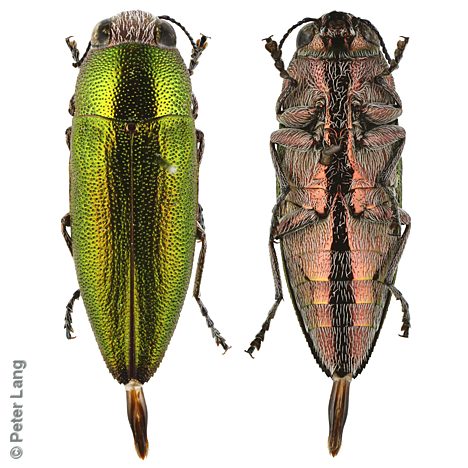






, SL, A11_x300.jpg)
, SL, A12_x300.jpg)









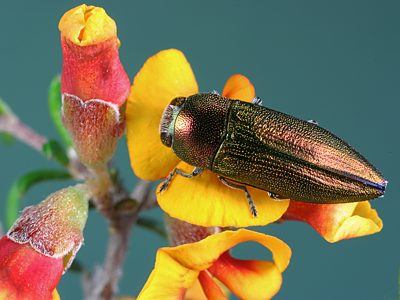
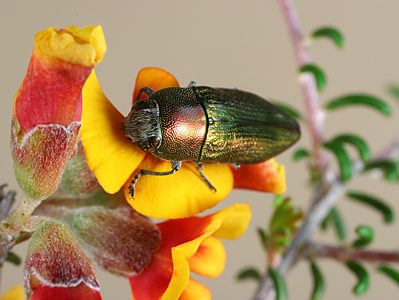



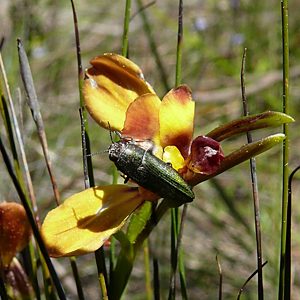



, SL, A3_x468.jpg)







, SL, A11_x300.jpg)
, SL, A12_x300.jpg)
















 stem base, SE, photo by A.M.P. Stolarski, L1_x300.jpg)
 root crown, MU, L1.5Q_x300.jpg)

 stem, dorsal, SL, L3_x300.jpg)
 stem, ventral, SL, L4_x300.jpg)
 stem, dorsal, SL, L5_x300.jpg)
 stem, ventral, SL, L6_x300.jpg)
 root crown, EP, L7_x300.jpg)
 swollen stem base, dorsal, KI, L8_x300.jpg)
 swollen stem base, ventral, KI, L9_x300.jpg)
, dorsal & ventral, MU, N1_x300.jpg)
 stem base, SE, photo by A.M.P. Stolarski, P1_x300.jpg)
, same pupa 4 days later on RHS, SE, P2.5Q_x300.jpg)

 stem base, SL, U1.5_x300.jpg)
 stem base, SL, U2.5_x300.jpg)
 stem base, SL, U3.5_x300.jpg)
 stem base, SL, U4.5Q_x300.jpg)
 stem base, SE, photo by A.M.P. Stolarski, U5_x300.jpg)
 root, SE, photo by A.M.P. Stolarski, U5.5_x300.jpg)
 stem base, MU, photo by A.M.P. Stolarski, U6_x300.jpg)
 stem base, MU, photo by A.M.P. Stolarski, U7_x300.jpg)
 root, MU, photo by A.M.P. Stolarski, U8_x300.jpg)
 stem base, MU, D1_x300.jpg)
 root crown, SE, D2_x300.jpg)
 root crown, SE, D3_x300.jpg)
 root crown, SE, D4_x300.jpg)

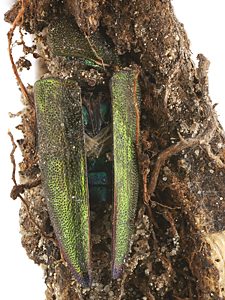
 stem base 2020-04-25 08-29-55 (B)-4 edit crop 1.5, EP, D7_x300.jpg)
 stem base, EP, D8_x300.jpg)